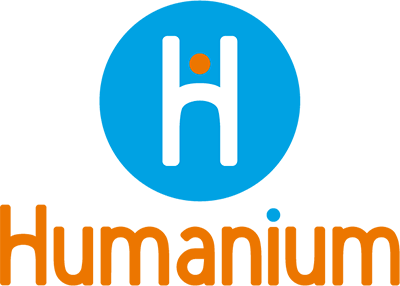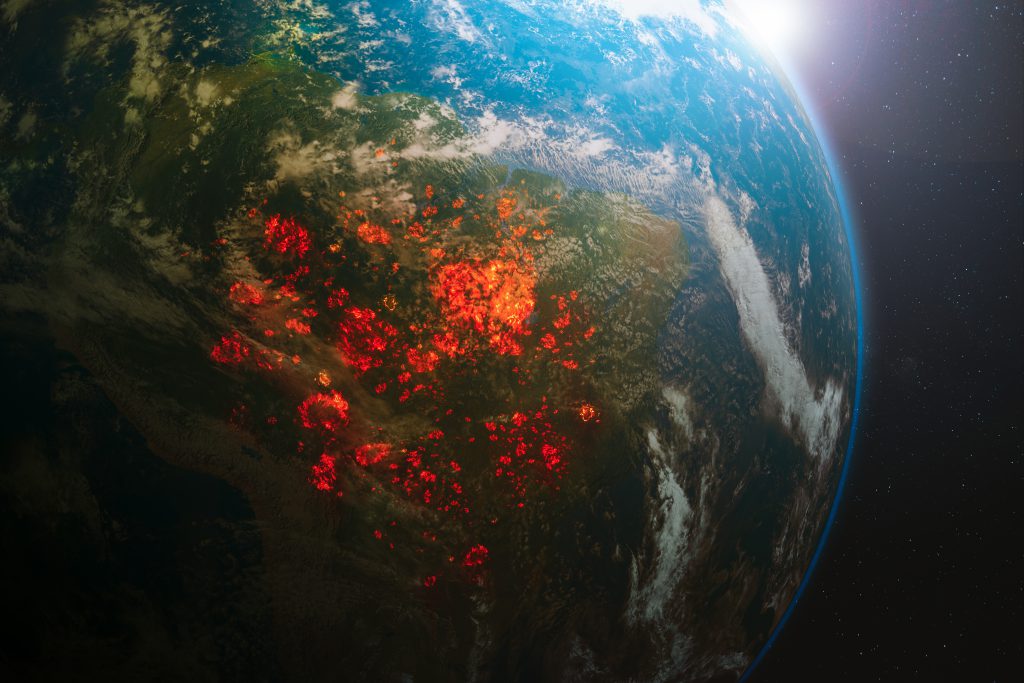Realizing children’s rights in Albania

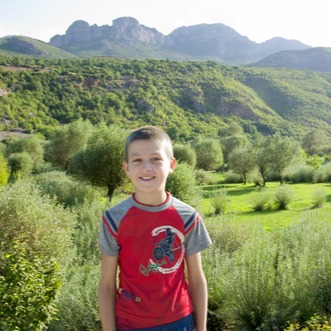
Since being granted EU candidate status in 2014, Albania has taken significant steps to align its child protection framework with international standards. The government ratified the Convention on the Rights of the Child (CRC) in 1991, followed by the Optional Protocol to the Convention on the Rights of the Child in 2013. However, the country still struggles to ensure those protections extend to the most vulnerable populations, including ethnic minorities and those seeking asylum.
Population: 2.8 million
Pop. ages 0-14: 16%
Life expectancy: 76.4 years
Under-5 mortality rate: 9.4 ‰
Albania at a glance
The Republic of Albania (Republika e Shqipërise), with Tirana (Tiranë), as its capital, is a country in southern Europe, in the western part of the Balkan Peninsula. Situated on the Strait of Otranto, Albania has coastlines on both the Adriatic and Ionian Sea. It shares a border with Montenegro to the northwest, Kosovo to the northeast, Greece to the south and North Macedonia to the east (Britannica, 2024).
Geographically, Albania is mountainous, with approximately three-fourths of the country consisting of mountains and hills, with an elevation of 650 feet (200 meters) above sea level. The northern part of the country is covered in the North Albanian Alps, an extension of the Dinaric Alps, which is forested and underpopulated.
The central mountain region, extending from the Drin River to the Osum River, is densely populated. Contrastingly, towards the south of Albania, the mountain ranges are less forested and are covered in thin Mediterranean shrubs. Similar to other Mediterranean countries, Albania has warm and dry summers and wet winters (Britannica, 2024).
After 47 years of isolation under communist rule, Albania became a parliamentary republic in March 1992, reorganizing itself into 12 counties. The main ethnic group is Albanian, complemented by nine officially recognized minority groups, which include Greeks, Macedonians, Aromanians, Roma, Balkan-Egyptians, Montenegrins, Bosnians, Serbians, and Bulgarians. The Roma people were officially recognized as an ethnic minority in Albania in 2017 (ECPAT, 2020).
Status of children’s rights [1]
Albania has committed to several international instruments for the protection of children’s rights. In 1992, the government ratified the Convention on the Rights of the Child (CRC). The Optional Protocol to the Convention on the Rights of the Child on the Involvement of Children in Armed Conflict and the Optional Protocol to the Convention on the Rights of the Child on the Sale of Children, Child Prostitution and Child Pornography were both ratified in 2008.
Albania has also ratified other international human rights instruments, namely, the International Covenant on Economic, Social and Cultural Rights in 1991, the Convention on the Elimination of All Forms of Discrimination against Women and the International Convention on the Elimination of All Forms of Racial Discrimination in 1994.
Addressing the needs of children in Albania
Right to education
Article 57 of the Albanian Constitution provides that everyone is entitled to access education and that basic education is mandatory for all. Albania’s education comprises four key segments: pre-university education, higher education, vocational education and training. Compulsory education begins from the age of six up to the age of sixteen.
This includes primary education and lower secondary education. The education levels are classified based on codes 0, 1, 2, 3, which are in reference to the international standards of education, as defined by the UNESCO General Conference in 1997 (European Commission, 2024).
Following the classification system, pre-school education (Arsimi Parashkollor), ISCED 0, begins from birth and continues up to age six. This level of education is not compulsory. Institutions providing pre-school education are classified into two categories:
- Needles (çerdhet), which are dependent on local governments and provide education for children from birth to age three.
- Kindergartens (kopshtet), which are dependent on the Ministry of Education, Sports and Youth and provide education for children aged three to six years old.
Basic education (Arsimi Bazë), ISCED 1, is compulsory and begins from the age of six, continuing until the age of ten. Lower secondary education (Arsimi i Mesëm), ISCED 3, consists of four classes, VI-XI. For children with disabilities, basic education is organized in specialized classes, within mainstream schools.
Upper secondary education (Arsimi i Mesëm i lartë), ISCED 3, is optional and begins at the age of sixteen. It includes three types of schools:
- General upper secondary (Gjimnazet), which is secondary education that lasts for three years;
- High school (Shkollat e Mesme Profesionale), that lasts for two to four years and is based on the Albanian National Qualification Framework;
- Oriented education schools (Shkolla të arsimit të orientuar), which are specialized schools such as art schools, sports schools or foreign language schools. Admission into these specialized schools is based on specific criteria established by the Decision of the Council of Ministers (European Commission, 2024).
In Albania, access to education and educational outcomes tends to be lower for ethnic minorities, such as Roma and Balkan-Egyptian children. However, the National Plan for the Integration of Roma and Egyptians (2015-2020) and the National Action Plan for People with Disabilities (2021-2025) have been designed to address these disparities and remove barriers to education for marginalized groups.
Despite these efforts, and laws permitting children without birth certificates to enroll in public schools, children from minority ethnic backgrounds and refugees still encounter obstacles to accessing education due to incomprehensive birth documentation.
Additionally, minority children often face systemic discrimination within schools. This includes segregation, where they are placed in separate classrooms, and inadequate school infrastructure. Inconsistent transport services further prevent them from attending school, while language barriers add another layer of difficulty to their educational experience (US Department of Labor, 2023).
Beyond these challenges, other barriers to accessing education include: poor infrastructure, inability to access schools due to poor road or transportation, migration and resource allocation (UNICEF, 2021).
Right to health
The Albanian health system is a combined public-private system, although the government provides for a majority of health care services. Under Albanian law, all citizens have equal access to health care, and health coverage is provided for through a mandatory health insurance system that is issued through the Compulsory Health Insurance Fund (CHIF).
While the entitlements and benefits of the CHIF are linked to payment contributions, children under the age of eighteen are covered for free (UNICEF, 2021). Despite average infrastructure, perception studies on the quality of the country’s healthcare system from the last decade portray a skilled workforce providing a high-standard service (Gabrani, Schindler and Wyss, 2020).
Right to clean water and sanitation
In 2022, Albania expressed interest in the self-assessment exercise. This assessment uses the United Nations Economic Commission for Europe (UNECE), equitable access score-card, under the Protocol on Water and Health, aiming to provide equal access to drinking water, sanitation and reducing geographical or socioeconomic disparities (UNECE, 2013).
In 2016, an EU assessment report of Albania noted that the major challenges in Albania include limited sewage networks, intermittent water supplies, and many utilities not being operational and high levels of illegal water supply connections. Due to this, Albania will align its water resources legislation and policies to the EU Water Framework Directive.
Since 2016, Albania has adopted the Drinking Water Directive 2020/2184 of the European Parliament on the quality of water intended for human consumption. As of 2024, 71% of the population use safely managed drinking water and 56% use safely managed sanitation services (The Water Diplomat, 2024).
Right to identity

Albania has, since 2023, worked to implement laws and regulations to reduce the prevalence of stateless persons and ensure the right to identity is protected. This includes mandating a 180-day statelessness determination process (SDP) to provide all persons in the country with the opportunity to provide documentary evidence to validate their identity. This process is in line with international best practice and Albania is a signatory to three of the four core statelessness conventions.
However, despite improvements, gaps remain. The country’s census data on immigration and asylum seekers fails to include a category for stateless persons and those currently in detention pending review, making it difficult to assess the SDP’s effectiveness. Moreover, the SDP requires a significant volume of documentation.
This creates particular risks for children who may struggle to have their births properly registered if their parents’ documentation presents irregularities or inconsistencies with domestic provisions. In recent years, Romani and Egyptian communities have been found to be especially vulnerable in this regard. Additionally, children with same-sex parents encounter systemic hurdles as their parents’ marriages are not recognized under Albanian law (Statelessness Index, n,d).
Risk factor –> Country-specific challenges
Child labor
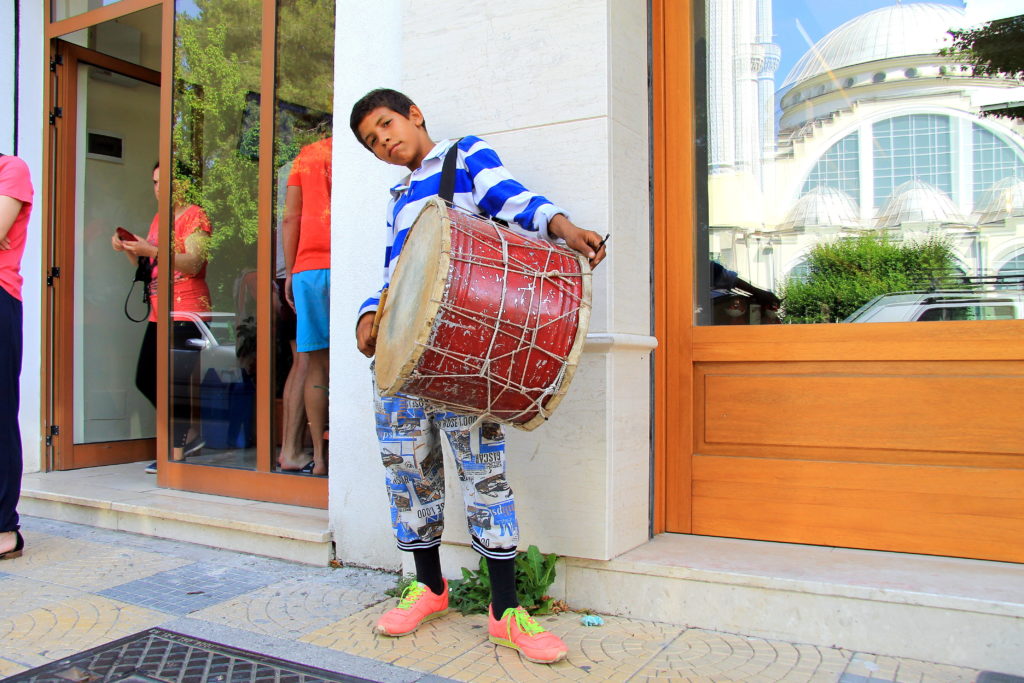
Albania has ratified all the key international conventions concerning child labor such as the International Labor Organization (ILO) Minimum Age Convention, 1973 (No. 138); Worst Forms of Child Labor Convention, 1999 (No. 182) and Palermo Protocol on Trafficking in Persons. Despite these ratifications, children in Albania are subjected to the worst forms of child labor within agriculture (farming), industry (construction, garment, footwear and mining), and services (begging, washing vehicles, working in hotels and call centers) sectors.
In 2023, as a part of fulfilling one of its obligations as a European Union candidate country, the Albanian government published its first Victims’ Protection Strategy 2024-2023. This strategy aims to protect and strengthen protection mechanisms and social services for survivors of the worst forms of child labor (US Department of Labor, 2023).
Children between the ages of five and fourteen make up 87.5% of the agriculture sector, 2.9% of the industry sector and 9.6% of the services sector. Children from the Roma and Balkan-Egyptian communities are particularly vulnerable to the worst forms of child labor. For example, children are forced to engage in collecting recyclables, street begging and scavenging chromium ore in hazardous mines (US Department of Labor, 2023).
Child sexual exploitation
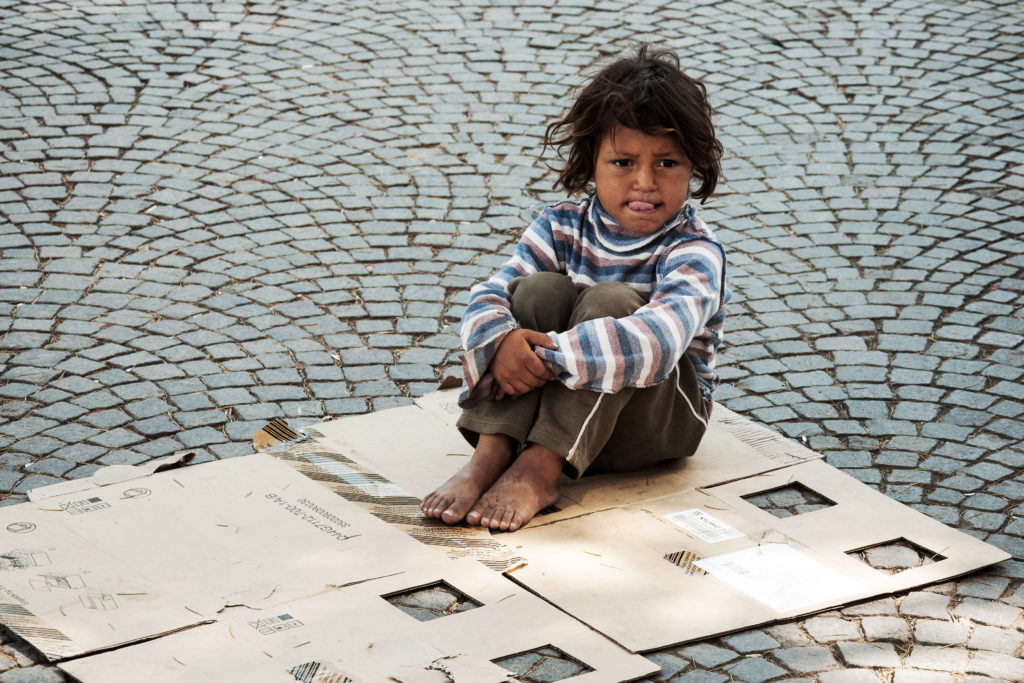
The high poverty rate and low educational enrollment rates leave children particularly vulnerable to sexual exploitation and trafficking, particularly children from the Roma and Balkan-Egyptian communities. Children in Albania are extremely vulnerable to being sold or trafficked for the purposes of sexual exploitation and are often identified as victims of trafficking in countries such as the UK, Italy, Kosovo, Macedonia, Montenegro, Greece and Italy.
In Italy, in 2018, it was reported that there were nineteen Albanian child victims of trafficking in the child protection system. Similarly, in June 2020, it was reported that there were 1,393 unaccompanied minors from Albania in Italy (ECPAT, 2020).
ECPAT Albania (a branch of the global ECPAT International Network, an organization dedicated to combating the sexual exploitation of children), reported that in 2018 alone, there were approximately over 5,000 Albanian children who were victims of international trafficking, often, with the involvement of their families. Roma children are particularly vulnerable to trafficking and exploitation.
There are strong intersections between the trafficking risk and sexual violence and exploitation. National legislation criminalizes prostitution; however there is no explicit prohibition of purchasing or soliciting sexual services from children. This failure to distinguish between adults and children increases the risk that children who fall victim to sexual offences are treated as offenders (ECPAT, 2020).
Child online safety
In 2019, a survey from the Albanian Institute of Statistics found that 82.2% of Albanian households had access to the internet and 88.9% had access to the internet through mobile phones. While access to technology is largely beneficial, there are several threats it can pose.
A similar survey illustrated that out of 1,000 children, 10% had experienced some form of unwanted sexual advances over the internet, 16% had met someone in person who they had initially met online and 25% had online contact with a person they had never met in-person (ECPAT, 2020).
In 2020, reports by iSIGURT.al (the National Platform for Safer Internet Albania) and ECPAT Albania found that out of 6,129 reported cases, 6,054 were videos, pages and profiles that contained some form of child sexual abuse material. Despite this growing concern about child online safety, there are legislative gaps, whereby Albanian law does not define or criminalize ‘child sexual abuse material,’ and other offences such as child grooming and child sexual extortion. In Albania, internet service providers are not legally bound to block, report or filter child sexual abuse material online, unless they have a commercial nature (ECPAT, 2020).
Despite ongoing lobbying from civil society organizations, Albania does not currently have national action plans that are dedicated to eradicating child sexual exploitation, child marriage, and the exploitation of children in the context of travel and tourism.
Violence against children
In Albania, violence against children affects boys and girls differently. This is partly due to the patriarchal traditions within society that predominately affect girls, with 88.8% of girls and women being victims of violence. In 2018, a national survey indicated that approximately 22% of children experienced bullying at least once within an educational setting, with boys (24%) experiencing more bullying than girls (20%).
Additionally, in 2017, police data indicated that 61% of all sexual abuse cases in Albania were committed against children, of whom girls were particularly affected (UNICEF, 2021). In 2018, in a survey of 5,371 children between the ages of 2-14 years old, it was found that 48% of these children had been subjected to at least one form of physical or psychological aggression (ECPAT, 2020).
Written by Vanessa Cezarita Cordeiro
Internally proofread by Aditi Partha
Last updated on 12 January 2025
References:
Britannica. (2024, December 23). “Albania.” Retrieved from Britannica Encyclopedia, accessed on 28 December 2024.
Committee on the Rights of the Child. (2023, October 17). “Concluding observations on the combined fifth and sixth periodic reports of Albania.” CRC/C/ALB/CO-5-6. Retrieved from United Nations Convention on the Rights of the Child, accessed on 7 January 2025.
ECPAT. (2020, August 10). “Sexual exploitation of children in Albania.” Retrieved from ECPAT, accessed on 28 December 2024.
ECPAT. (2020, August). “Albania ECPAT country overview: A report on the scale, scope and context of the sexual exploitation of children.” Retrieved from ECPAT International, accessed on 7 January 2025.
Euro Child. (2024, April). “Children’s rights in Albania.” Retrieved from Euro Child, accessed on 28 December 2024.
European Commission. (2024, December 4). “Key features of the education system Albania.” Retrieved from European Commission, accessed on 7 January 2025.
Gabrani, J., Schindler, C., Wyss, K. (2020, November 26). “Perspectives of public and private primary healthcare users in two regions of Albania on non-clinical quality of care.” Retrieved from National Library of Medicine, accessed on 8 January 2025.
Statelessness Index. (n,d). “Albania.” Retrieved Statelessness Index, accessed on 8 January 2025.
The Water Diplomat. (2024, April 22). “Albania to pilot UNECE’s scorecard for equitable access to water and sanitation.” Retrieved from The Water Diplomat, accessed on 21 January 2025.
UNICEF. (2021, June). “Situation analysis of children and adolescents in Albania.” Retrieved from UNICEF, accessed on 28 December 2024.
UNECE. (2013, November). “The equitable access score-card: supporting policy processes to achieve the human right to water and sanitation.” Retrieved from UNECE, accessed on 21 January 2025.
US Department of Labor. (2023). “2023 findings on the worst forms of child labor.” Retrieved from Bureau of International Labor Affairs, accessed on 9 January 2025.
[1] This article by no means purports to give a full or representative account of children’s rights in Albania; indeed, one of many challenges is the scant updated information on the children of Albania, much of which is unreliable, not representative, outdated or simply non-existent.
